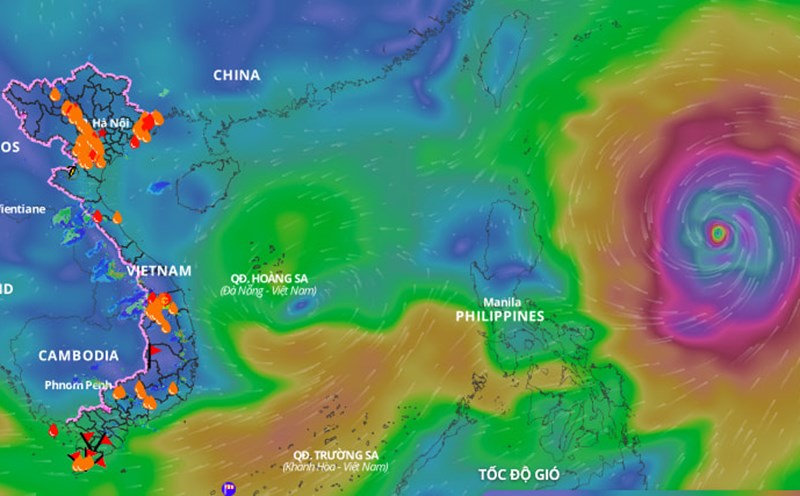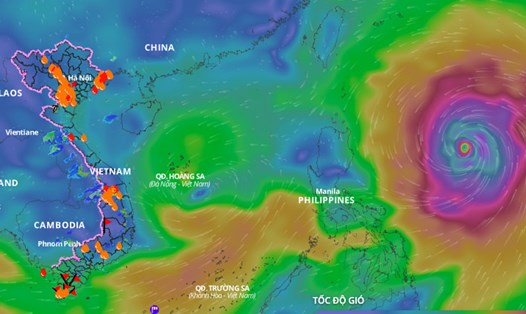Right before the April 30 - May 1 holiday, the weather in the north will change due to the impact of cold air. The reporter discussed with Mr. Mai Van Khiem - Director of the National Center for Hydro-Meteorological Forecasting (Department of Hydro-Meteorology) - to clarify the development of this cold air mass.
Sir, could you tell us when the cold air will affect the weather in the North?
- The cold air mass is still moving south. Around the morning of April 28, this cold air mass will affect the Northeast region, then affect the North Central region, some places in the Northwest.
The interaction of weak cold air masses suppresses the low pressure trough, so from the evening of April 27 to April 28, the Northeast region will have rain, moderate rain and thunderstorms, locally heavy to very heavy rain. The Northwest and North Central regions will have scattered showers and thunderstorms, with some places having heavy rain.
At sea, the Gulf of Tonkin winds will shift to the northeast at level 4 - 5, sometimes level 6, gusting to level 7 from April 28. Rough seas; Waves 1.5 - 2.5m high.

Will the cold air causing rain lead to a drop in temperature, what is the forecast for the lowest temperature in this northeast monsoon?
- On April 28, the Northeast will turn cool, some mountainous areas of the North will be cold. The lowest temperature in this cold air mass in the Northern region is generally from 20 - 23 degrees Celsius, in high mountainous areas it is below 18 degrees Celsius. The North Central region is generally 22 - 25 degrees Celsius.
Previously, recent rains were often accompanied by extreme phenomena. What recommendations do you have for people during the upcoming cold air causing rain?
- From the end of March to the first half of May, the North will enter the changing seasons, when there is a conflict between the weak cold air mass from the north and the hot air mass.
The conflict between these air masses makes the atmosphere unstable, easily accompanied by strong thunderstorms accompanied by gusts of wind, lightning, and hail.
One of the characteristics of thunderstorms during the changing seasons is their rapid development, often occurring in a narrow range but with high intensity; associated with the risk of flash floods and landslides.
People should closely monitor weather warnings to prevent and have timely prevention plans.
Sincerely thank you!











